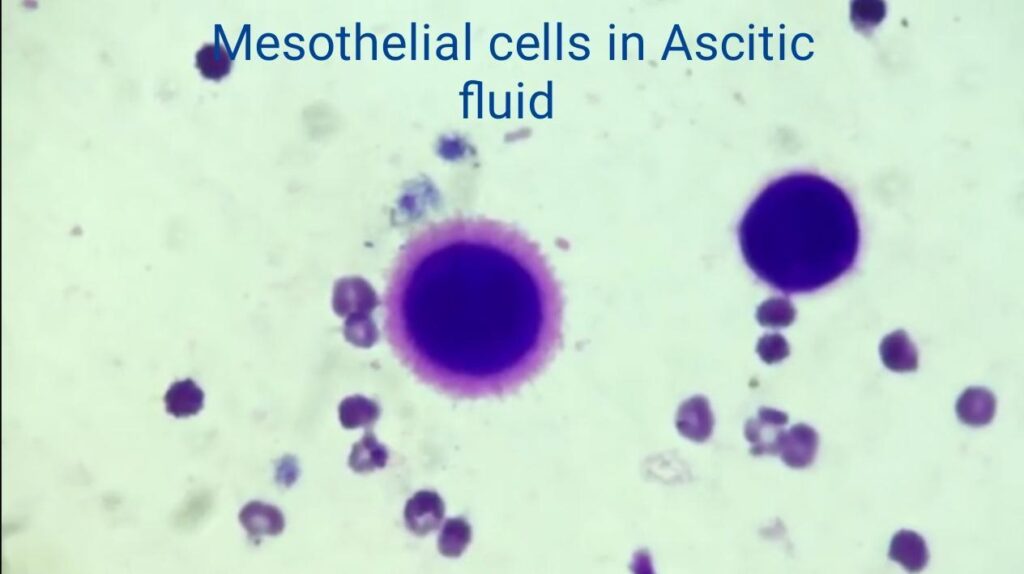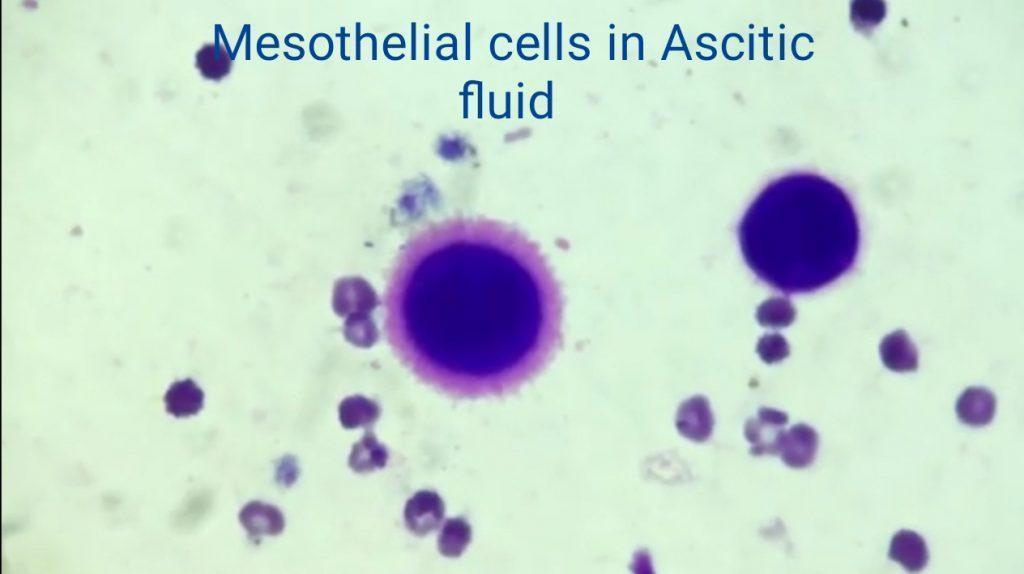Introduction
Mesothelial cells-Mesothelium-and Mesothelioma, all are related to one another. The mesothelium consists of mesothelial cell layers that line many body organs, like the lungs, heart, and intestines. The cells that make mesothelium are called “Mesothelial Cells”. Mesothelioma is a type of cancer that may arise from the mesothelium. The basic function of mesothelial cells is to produce a slippery, nonadhesive, and protective surface.
Mesothelium definition and meaning
The definition of Mesothelium may be “Membranes which protect most of the part of internal organs of the body, it also permits the freedom of movement organs such as lungs contraction”. Mesothelial cells form a layer of specific pavement-like cells. These cells line the body’s serous cavities and many internal organs.
The layer of the mesothelial cells builds up a membrane that lines up body cavities and covers most of the surface of the body’s internal organs. The lining which is formed by the mesothelial cells is called the “mesothelium membrane” or simply “Mesothelium”
Where you can find Mesothelium?
The mesothelium is the innermost layer of the body’s mesoderm. It is a thin sheet of cells that lines the cavities that contain organs and other structures in your body, such as your lungs and heart.
It has two layers of cells. One layer surrounds the organs of the body while the other one forms a sac around it.
The role of the mesothelium is to produce a very essential lubricating fluid. This is secreted between these layers, thus allowing moving organs (such as the heart and lungs) to move smoothly and easily against adjacent parts of your body. Moreover, this kind of fluid makes facilitates the lungs to move inside the chest during your breathing.

The mesothelium has various names. This depends on its location in your body. Here are some examples and their details;
1-Pleura:
This is the membrane of mesothelial cells that surrounds the lungs and also lines the chest wall cavity.
It has two types.
Visceral pleura (this is the inner pleura)
The main work of visceral pleura is that it covers the outer surface or the outer area of the lungs. It clings to or adheres to the lung fissures which separate or divide the lobes of the lungs. So each lobe is protected or covered with the pleura.
Parietal pleura (this is the outerpleura)
It lines the chest wall and extends up to the diaphragm and mediastinum.
The Pleural space: This is the space between the two layers of pleura. It contains a small amount of the fluid.
2- Peritoneum:
This protects the majority of the organs located in the abdominal cavity.
It has two types
Visceral peritoneum:
Most of the internal abdominal organs are covered and supported by the visceral peritoneum.
Parietal peritoneum:
This is the type of peritoneum that lines the walls of the abdomen and also of the pelvis.
The visceral peritoneum separates the parietal peritoneum by a narrow fluid-filled space.
3- Pericardium:
This covers up and protects the heart.
4-Tunica vaginalis testis:
This is present in males and surrounds the internal reproductive organs
5-Tunica serosa uteri:
This protects the internal reproductive organs of females
What are the other functions of Mesothelium?
The function of Mesothelial cells is to line the serous cavities of the body. These cavities include the peritoneal (abdominal), pleural (thoracic), and pericardial cavities and some other organs. Mesothelial cells also act as protective barriers against invading pathogens, cells, and particulates. This protection is increased by the secretion of glycosaminoglycans (especially hyaluronan), proteoglycans such as syndecans and biglycan, and surfactant lubricants, which prevent attachment and penetration of cells by infective agents and possibly inhibit tumor dissemination
So, besides protective functions, the other functions include;
- help in immunity
- help in the healing process
- have a role in coagulation
- transportation through the cell membrane
- protect from tumors
- they secrete fluid like serous fluid
From where do mesothelial cells come?
During the embryonic period, the mesoderm arises from the coelom- that is the body cavity in the embryo.
Mesothelial cells in pleural fluid
The fluid present in the pleura is called pleural fluid. The Pleura is the lining of the lungs that cover the lungs and line the chest cavity. When you breathe, this fluid protects the lungs from friction. Reactive pleural mesothelial cells may occur in fluid due to inflammation or infection like pulmonary tuberculosis. Moreover, cancer called Mesothelioma can develop in the mesothelium layers due to long asbestos exposure.
Injury to the Mesothelium
When there is any Injury to the mesothelium, this may elicit some events. This can lead to the migrant mesothelial cells from the edge of the laceration towards the wound center. In addition, this can also lead to the desquamation of cells into the serosal fluid. This then attaches and slips into the regenerating mesothelium.
The mesothelial are very sensitive to the cytotoxic effects of asbestos fibers. It is estimated they are 10 to 100 times more sensitive.
Reactive mesothelial cells
The reactive mesothelial cells(RMC) may be produced due to inflammation, infarction, or infections by viruses, bacteria, or fungi. Some other reasons may include metastatic tumors or injuries to the lungs.
Mesothelial cells in ascitic fluid or peritoneal fluid
Mesothelium also lines the peritoneal cavity. Due to many infections or tumor insults, abnormal types of cells may be present in ascitic fluid.
The mesothelium may play a part in the immune system, as it lines body cavities such as blood vessels, lungs, and lymphatic vessels. In addition to this important function of protecting these organs from outside invaders, it also regulates many processes related to metabolism and respiration in normal conditions; for example:
- It prevents fluid loss through osmosis (leaking).
- It helps regulate pH levels in blood plasma (acid/alkaline balance).
- They function as a part of the immune system and protect underlying organs by a mechanism separate from that of the immune system.
- The airways, which contain mucus production and protection against pathogens
- Anuses, protect against pathogens entering through contaminated feces or urine
- They may also serve other functions such as helping regulate blood pressure and fluid balance by controlling fluid transport across cell membranes.
Can cancer develop from mesothelial cells?
Yes, a rare form of cancer can develop in these cells. It is discussed below in detail. It’s most common in people with a history of asbestos exposure, however, it’s more commonly found in men than women.
This is generally diagnosed by imaging tests, such as X-rays or CT scans, which can show tumors growing inside your body (called metastases).
Mesothelioma
Mesothelioma is one kind of cancer. This cancer grows in the mesothelium that lines the lungs, and other organs. In this disease, the cells in the mesothelium become abnormal. They begin to divide without any control. So they may invade and damage tissues around organs. Most commonly, mesothelioma develops in the pleura or peritoneum. Fortunately, it is rare cancer.
What causes this cancer?
When asbestos becomes embedded within the tissue, the mesothelial cells could undergo to mutations, leading to the growth of abnormal cancerous cells. A proliferation of these cells can form a cancerous tumor. The people that are diagnosed with Mesothelioma have a history of working in the asbestos industry. Asbestos can cause various forms of diseases. It can lead to asbestosis or more serious cancer.
Those who are exposed to asbestos get the disease after a long time may be many years. And, the frequency of the disease has increased in the last few decades. But, it is still considered a rare disease to date. In the united states, around 3000 cases are reported annually. The chances of cancer increase with age but also depends on the time of exposure. It can affect both male and female but are more common in men.
Conclusion
The mesothelial cells are found inside body cavities that are lined with mesothelium. The major function of these cells is to provide protective layers for organs and tissues. The mesothelial cells play some other crucial roles. This can include fluid movement, immunity, coagulation, inflammation, tissue repair, fibrinolysis, and some tumor protection.
——————————————————————————————————————–
If you are health conscious, then you must check out the following amazing products
The ultimate keto plan, Negative Ions Sticker-protect your family, Smart Blood Sugar, The Essential Keto cook book, Lean Belly, Doctor’s Book of Survival Home Remedies, Custom Keto Diet, The Back Pain SOS, Cleaner Smile Teeth, The Lose Your First 10 Lbs, Nutrition Guide, Meal Planner
For a better experience of web hosting and domain, please click here










